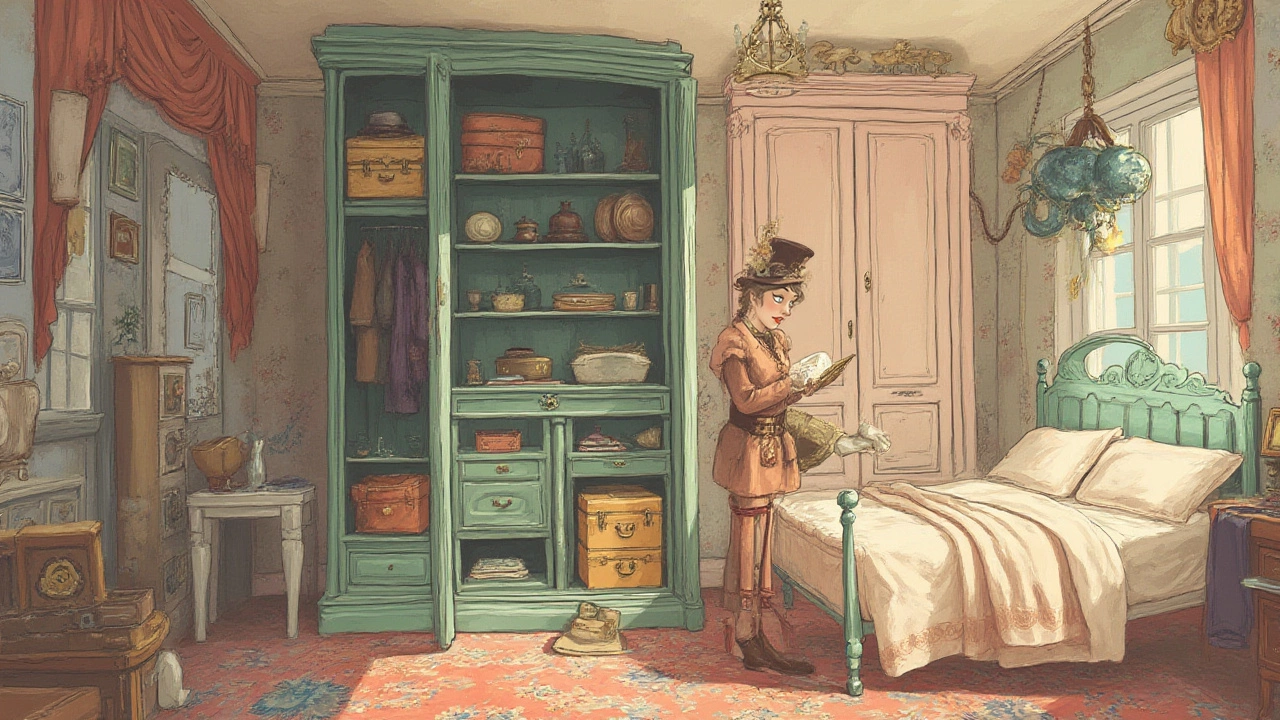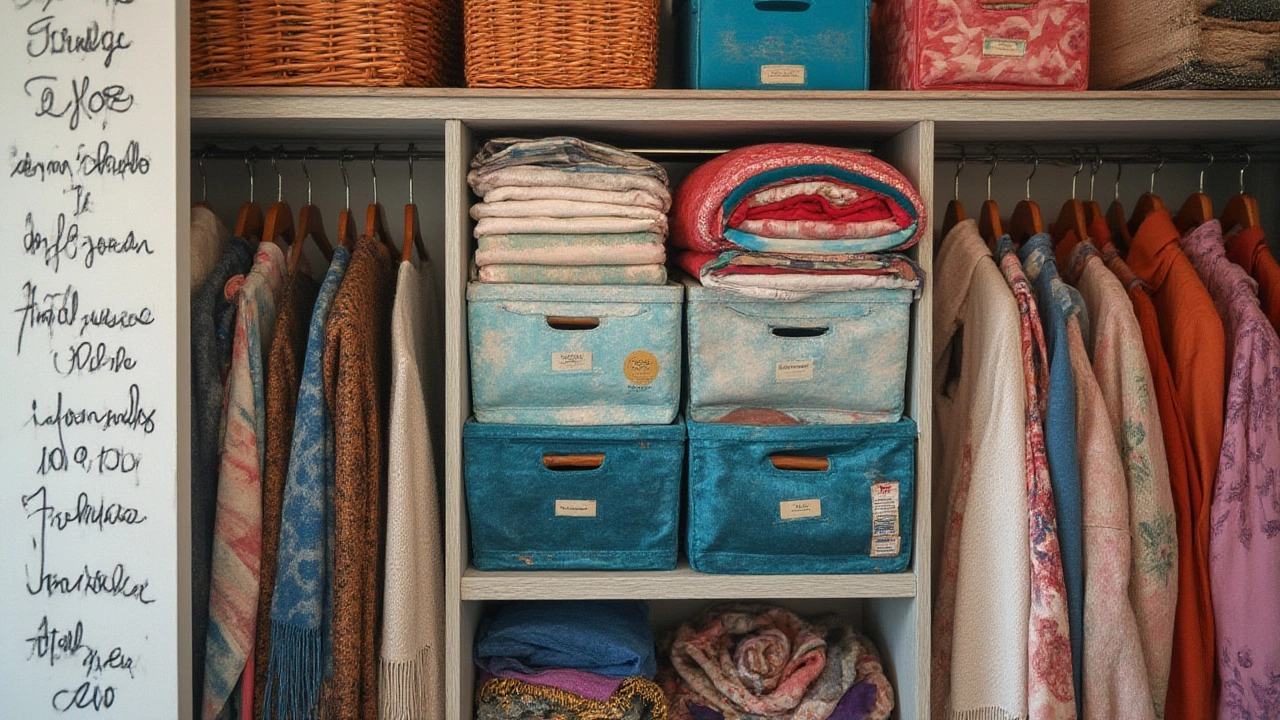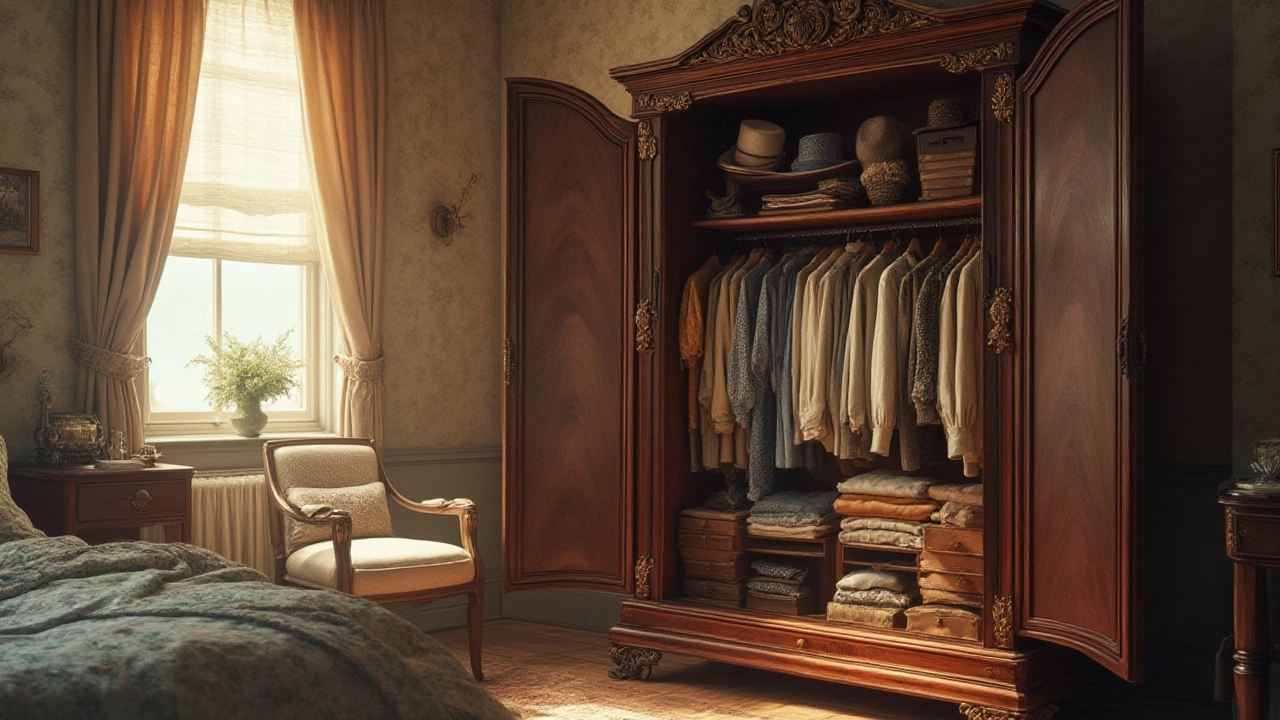Some things get better when you call them by their fancy names. Nobody swoons over “closet,” but toss out “wardrobe” or “armoire,” and suddenly you’re in a BBC period drama or an Instagram influencer’s walk-in. Language has the power to upgrade something as ordinary as a home storage nook into a statement of style. So, what’s the fanciest word for “clothes closet”? And why do these names matter more than you’d think? Turns out, your choice of words can hint at your personal taste, your home’s vibe, and even your lifestyle. Let’s pull open those double doors and look deeper.
Wardrobes, Armoires, and the Evolution of the Closet
For centuries, storing clothes was more complicated than stuffing a tangle of shirts behind a door. Before built-in closets became popular—only really common in North America after the early 20th century—people relied on portable furniture. The word “wardrobe” comes from the Old French “garde-robe,” which literally means “to guard your robes.” In medieval times, it referred not just to a piece of furniture, but to an entire room (if you were lucky and wealthy) dedicated to clothing and accessories. In England, the term stuck. Even now, when Brits say “wardrobe,” they mean what Americans typically call a closet—a tall piece of furniture for hanging and storing clothes. But there's more to this story than old words floating across the Atlantic.
A wardrobe, by dictionary definition, is “a tall piece of furniture that provides storage space for clothes, including a rail for hanging.” Step up a notch, and you get to “armoire,” a word with serious luxury DNA. The term hails from 17th-century France, where ornate solid wood cabinets were built for upper-class homes. An authentic armoire is grand, almost theatrical: think carved doors, heavy handles, and room not just for your jackets but your jewelry, luggage, and probably a hidden bottle of cognac.
Here’s a funny twist: the built-in closet, the most basic form of clothes storage for many Americans, is still pretty rare in homes across much of Europe and Asia. Instead, people buy standalone wardrobes or armoires when they move in. “Closet” itself has roots in Latin (“clausum,” meaning closed or shut), and originally meant any small, private room, often for prayer. Shakespeare even used the word to mean a private area, as did early American architects like Thomas Jefferson, who built private “closets” for study, reading, or escape from family chaos. Only after World War II, with the suburban boom, did the “closet” as we know it—in-wall, sliding doors, and meant only for clothes—become standard in American construction.
Some modern homes and apartments now add a cooler twist: the “walk-in closet,” which is really more like a tiny dressing room. But go one size up, and you might just have a “dressing room” on your hands—a separate space for getting ready, picking outfits, and maybe even lounging while staring at your shoe collection. “Boudoir” enters the scene too, often used by interior designers for particularly lush or glamorous dressing rooms. So, those basic doors hiding last year’s sweaters? They belong to a tradition reaching far back in time—and what you call them can tell an entire story about your space.

Fancy Words for Closets: What’s the Right Term for You?
If you want your home to feel like it stepped out of an interiors magazine, you’ll need to pick the right word for your storage. Here are the fanciest options out there, all with their own vibes and histories:
- Wardrobe: Works for both freestanding furniture and built-in closets, especially in British English. Drop this word at your next dinner party and everyone will wonder when you became so posh.
- Armoire: Think old-school French glam, ornate woodwork, maybe even a little secret hiding place. The armoire is the “statement piece” of the clothes-storage world—especially if you love antiques.
- Dressing Room: If your storage becomes an actual room, you’ve leveled up into dressing room territory. This is the playground for fashion lovers, with seating, huge mirrors, and maybe even a sound system for a morning dance while picking your outfit.
- Boudoir: More rare, but very chic. Technically, a boudoir is a woman’s private bedroom or sitting room—but in design circles, it’s sometimes used for the kind of lush, soft-light dressing room you see on Pinterest boards for dream homes.
- Vestiaire: If you want to go even fancier, try this French term. In France, it usually means a cloakroom or locker room, but upscale apartment listings use it for stylish personal storage areas.
But don’t overlook words with regional flavor. In the American South, “chiffonier” sometimes pops up—not just for small chests of drawers, but for any compact wardrobe. In India, “almirah” (from the Portuguese “armário”) is common in English conversation for storage cupboards.
Still, if we’re talking pure sophistication, “wardrobe” is tough to beat. It covers both the furniture and the collection of clothes inside, giving you options. If you want to sound even smarter, drop in its origins (“garde-robe—a guard for your clothes!”) during casual conversation. And if your home boasts an old-world vibe—with dark woods or European flair—“armoire” will melt hearts. Want to sound modern, but a little exclusive? Start referring to your “dressing room.”

Making the Most of Your Clothes Closet: Storage Tips and Interior Tricks
So you’ve picked your fancy term. But does your closet live up to the hype? Why not trick it out so it feels less like a messy afterthought and more like a wardrobe (see what I did there?) from a dream magazine? Here’s the nitty-gritty: the average American closet holds about 100 garments, but only 20% get worn regularly. People waste over an hour every week searching for items they’ve lost in the jumble. With a little thought, your “closet”—whatever you call it—can feel like a curated boutique, not a laundry backup zone.
Start with storage basics. Wardrobes and armoires score high for flexibility: you can move them around, swap out the inside layout, and choose one that fits your style. For built-in closets, add layers: upper shelves for off-season bins, slide-out baskets for shoes, and double hanging rails for shirts and pants. If you’re really pressed for space, vacuum-sealed bags or rolling bins tucked under your bed can buy you another season’s worth of storage. Never underestimate the mood boost from matching hangers, either—it gives a sense of order that helps you keep things neat.
Lighting turns a dark closet into a designer-worthy space. Battery-powered LED strip lights or tap-on pucks work wonders if you rent or can’t wire a new fixture. For armoires, playful options like wallpaper or bold paint inside elevate the look. Mirrors trick your eyes into thinking there’s more space—install one on the inside of the door or go wild and put a full-length model in your dressing room.
Don’t ignore smell, either! A well-stocked wardrobe—or even a tiny closet—can fall prey to mustiness faster than you can say “vintage.” Cedar balls, scented sachets, or just regular airing out keep things fresh. And if you’re going for that really fancy vibe, tuck a little perfume-scented card in the corner. That’s pure old-money luxury.
Here’s a fun fact: The world’s biggest closet—if you can even call it that—belongs to socialite Theresa Roemer in Houston, Texas. It’s three stories high, holds a champagne bar, and cost over $500,000 to build. Her “closet” is really a collection of wardrobes, armoires, and dressing rooms stacked into one private shopping mall. But you don’t need lottery money to make your clothes storage feel special. The secret is in thoughtful design, smart storage tricks, and, yeah, calling it something fancy now and then.
Next time someone asks where you keep your jackets, go ahead—say “wardrobe” with pride. Who knew one little word could carry centuries of history, a touch of luxury, and a whole lot more style?


Write a comment